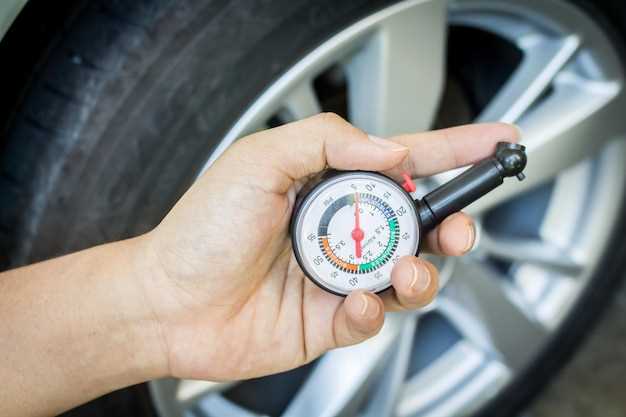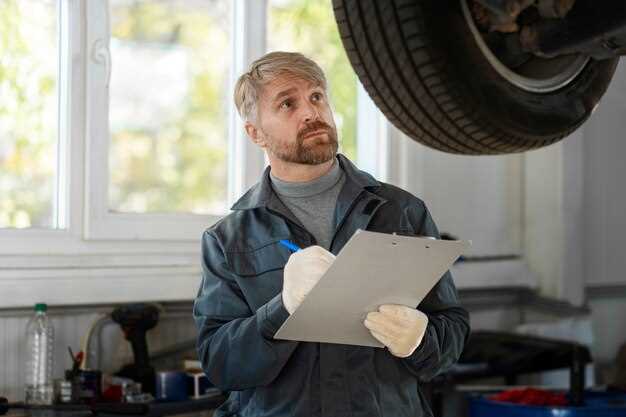If you’re aiming to stretch the lifespan of your tires up to 50,000 miles, regular maintenance is key. Analyzing recent studies, tire longevity hinges on factors like driving habits, road conditions, and regular upkeep. Let’s explore these elements with precise guidance to enhance your driving safety and tire performance.
Maintaining proper tire pressure is crucial, as under-inflation can reduce tire life by up to 25%. Regularly checking your tire pressure at least once a month could save you significant costs in the long run. Additionally, rotating your tires every 5,000 to 7,500 miles ensures even wear, maximizing tread life.
The latest consumer reports indicate that aligning wheels annually can prevent uneven wear patterns. Moreover, investing in high-quality tires suited to your vehicle type and driving conditions significantly impacts their durability. With these data-backed strategies, you can confidently extend your tires’ lifespan while enhancing your vehicle’s overall efficiency.
Factors Affecting Tire Lifespan

Regular maintenance significantly extends tire lifespan. Ensure consistent tire pressure checks as incorrect inflation can reduce durability by 20%. Proper alignment is crucial as misalignment causes uneven wear, leading to premature tire replacement. Inspect tires monthly for signs of damage like cuts or bulges, addressing issues immediately to prevent hazards.
Driving habits play a vital role. Aggressive driving–fast accelerations, hard braking, and high-speed cornering–accelerates tread wear. Adopt a smoother driving style to increase tire longevity. Urban driving, with frequent stops and starts, typically shortens tire life more than highway driving. Aim for moderate speeds to reduce stress on tires.
Climate impacts tire condition remarkably. Extreme temperatures affect tire materials; very high temperatures can soften rubber, while cold conditions might cause brittleness. Store tires properly when not in use, away from direct sunlight and heat sources, to preserve their quality. Consider obtaining tires suitable for your climate, such as all-season or dedicated winter tires, to maximize performance and lifespan.
Load capacity is another critical aspect. Never exceed the maximum load rating of your tires, as carrying excessive weight increases stress on the tire structure, accelerating wear. Regularly rotate your tires, especially in vehicles bearing uneven loads, to ensure even tread wear and extend their overall life.
Choose the right tire for your vehicle and needs. High-performance tires offer enhanced handling but may have a shorter lifespan than touring tires. Consider the driving conditions and priorities, such as fuel efficiency versus grip, when selecting tires, and replace them once the tread depth reaches 2/32 inches as per safety standards.
Impact of Driving Habits on Tire Wear
Adjust your driving habits to extend the lifespan of your tires significantly. Bad habits like aggressive acceleration and hard braking can lead to increased and uneven wear. Statistics show that these actions elevate tire wear by up to 20% compared to a more cautious approach. Smooth control of the vehicle not only conserves tire tread but also enhances fuel efficiency.
Ensure regular alignment checks, particularly if you frequently drive over rough terrain. Misalignment can lead to rapid tread erosion, causing tires to last 50% less than their expected lifespan. Avoid potholes and curbs to minimize alignment issues.
Maintain consistent tire pressure, as improper inflation contributes to uneven wear. Under-inflation increases the tire’s contact with the road, resulting in excessive shoulder wear, while over-inflation causes rapid wear in the center. Check tire pressure monthly; ideally, tires should align with the manufacturer’s pressure recommendations for optimal performance.
Reduce speed when navigating curves, as high-speed cornering causes increased lateral forces on tires, leading to inner and outer tread wear. A lower speed gives better control and decreases wear.
Use engine braking over pedal braking where safe to minimize strain on the front tires, thereby enhancing their longevity. Mindful adaptation of these practices can ensure a longer, more efficient tire life.
Influence of Climate and Road Conditions
Choose tires specifically designed to withstand the particular climate you drive in to significantly prolong their lifespan. In hot climates, opt for tires with higher heat resistance to avoid premature wear due to high temperatures. Contrast this with cold environments where winter tires provide better grip and durability on icy roads.
Regularly check the tire pressure as it tends to fluctuate with temperature changes, leading to uneven tread wear if not monitored carefully. Proper inflation ensures optimal contact with the road, extending the life of your tires, especially during drastic weather changes.
Road conditions play a substantial role in tire longevity. Smooth, well-maintained roads contribute to a longer tire life, while frequent driving on rough or gravel roads can accelerate tread wear and lead to potential damage from debris. Avoid potholes, which can cause sidewall bulges and splits, leading to a shortened tire lifespan.
Road salt used in winter to manage ice needs special attention. Rinsing your tires regularly helps prevent salt accumulation, which can cause rubber deterioration over time. Consider using all-season tires if you frequently switch between different road types and conditions for a balanced approach between performance and wear.
Role of Tire Maintenance Practices
Regularly check tire pressure to maximize tire lifespan. The correct pressure, often found in the vehicle’s manual, optimizes fuel efficiency and tread wear. Uneven wear signifies misalignment or improper inflation, leading to unnecessary replacements.
Perform tire rotations every 5,000 to 8,000 miles. This promotes even tread wear, prolonging tire life and ensuring balanced handling. Neglecting rotation can lead to early tread damage.
Inspect for tread depth using the penny test: insert a penny into the tread with Lincoln’s head upside down. If you see the top of his head, replace the tires. Consistent checks guarantee safe driving conditions.
Balancing tires at each rotation reduces vibrations and uneven tread wear, extending longevity. Unbalanced tires cause suspension damage, which escalates maintenance costs. Ensure this simple practice for smoother drives.
Regularly clean tires and remove debris lodged in the treads. Contaminants like oil and dirt can degrade rubber. Clean tires contribute to better grip and road safety, especially in wet conditions.
Attend to tire repairs promptly. Punctures should be inspected and patched appropriately by professionals to prevent progressive damage. Quick action prevents costly replacements.
Difference Between Tire Brands and Models
Choose tires based on your specific driving needs and conditions. Some brands focus on longevity, making them ideal for drivers covering extensive distances. Michelin, for example, delivers durability and reliable performance, often lasting over 45,000 miles under normal driving conditions.
If budget constraints are a priority, brands like Hankook provide affordable options without compromising safety and performance. For drivers demanding high performance and exceptional grip, Pirelli offers tires designed for speed and handling, ideal for performance sports cars.
Consider the climate as well. Goodyear’s all-season tires are a versatile choice for those experiencing varied weather conditions, providing reliable traction year-round. Meanwhile, for winter driving, Bridgestone’s Blizzak series excels in providing enhanced grip on ice and snow.
| Brand | Focus | Best For |
|---|---|---|
| Michelin | Durability | Long-distance driving |
| Hankook | Affordability | Budget-conscious |
| Pirelli | High performance | Sports cars |
| Goodyear | All-season versatility | Variable climate conditions |
| Bridgestone | Winter traction | Snow and ice |
Select the right tire model by recognizing distinct characteristics each brand offers, ensuring a perfect fit for your driving style and environment. Invest in quality for both safety and optimal performance on the road.
Measuring and Extending Tire Mileage

Consistently checking tire pressure is key. Under-inflated tires reduce fuel efficiency and wear out more quickly. Make it a habit to inspect tire pressure monthly, ensuring it matches the manufacturer’s recommended levels. Proper inflation can extend tire lifespan by 10% and improve fuel consumption by up to 3%.
Rotate your tires every 5,000 to 8,000 miles. This practice ensures even wear and maximizes tire life by distributing driving forces equally across all tires. Uneven wear might lead to alignment issues, reducing your tires’ longevity.
Alignment checks are vital. Misalignment can cause uneven tire wear, shortening the lifespan significantly. Schedule a professional alignment if you notice the vehicle pulling to one side or experience unusual vibrations, enhancing both safety and mileage.
Regularly inspect your tires for damage or foreign objects embedded in the tread. Immediately address any punctures or cuts to prevent further damage and possible blowouts. Quick intervention can often save a tire from needing early replacement.
Monitor tread depth to prevent dangerously low levels that can compromise your car’s traction and safety. Use a penny or a tread depth gauge to ensure there’s sufficient tread. Tires should have at least 2/32 of an inch depth; anything less affects performance, particularly on wet roads.
Adopt a smooth driving style. Abrupt starts and stops, along with speeding, accelerate tire wear. Maintaining moderate speeds and gentle braking can enhance tire longevity and efficiency, while also contributing to safer driving habits.
How to Assess Tire Tread Depth
Use the reliable and straightforward penny test to assess tire tread depth. Place a penny into the tread groove with Lincoln’s head facing down. If you see all of Lincoln’s head, the tread is worn out, and it’s time for replacement. This method provides a quick visual check to ensure your tires have adequate tread.
- Tread Depth Gauge: Invest in a tread depth gauge for a more precise measurement. Place the gauge into the tire groove to read the depth in 32nds of an inch. New tires usually start with 10/32″ to 12/32″. If the gauge shows 2/32″ or less, replace the tire immediately.
- Regular Inspections: Perform tread checks monthly. Look for uneven wear patterns or bald spots that may indicate alignment issues or the need for tire rotation.
- Check All Tires: Don’t forget the spare! Ensure all tires, including the spare, have adequate tread. Consistent checks help maintain balance and safety.
- Consider Your Environment: In rainy or snowy areas, consider replacing tires around 4/32″ for better traction. Deeper tread helps channel water away, reducing hydroplaning risk.
Maintaining proper tire pressure is crucial for keeping tread wear even and extending tire life. Regularly inspect, measure, and act on tread depth findings to ensure optimal driving safety and performance.
Signs of Uneven Tire Wear and Their Causes
Check your tires regularly for these visible signs of uneven wear:
Feathered Wear Patterns: Tires feel smooth on one side and sharp on the other. Often caused by improper alignment, which leads to the tread being dragged across the surface. Have your alignment checked if you notice this pattern.
Heel and Toe Wear: The tread blocks appear worn down in a saw-tooth shape. This happens when the tire doesn’t rotate properly, usually due to insufficient inflation or imbalanced weight distribution. Ensuring correct tire pressure and proper rotation can prevent this.
Center Wear: Excessive wear down the middle of the tire tread indicates over-inflation. This causes the center of the tire to carry most of the load. Regularly monitor and adjust tire pressure according to the manufacturer’s specifications.
Edge Wear: More wear on the tire’s inside or outside edges suggests underinflation or a need for alignment adjustment. Check air pressure regularly and adjust as necessary, and if the problem persists, have your suspension system examined.
Identifying these patterns early can enhance safety, extend tire life, and improve vehicle handling. Routine maintenance and correct tire pressure are key preventive measures against uneven tire wear.
Strategies for Prolonging Tire Life
Rotate your tires every 5,000 to 7,000 miles to ensure even tread wear. Regular rotation prevents uneven tire wear and extends their lifespan. Align your wheels at least once a year or when you notice your vehicle pulling to one side, as improper alignment leads to quick degradation.
Check tire pressure monthly. Under-inflated tires increase rolling resistance, causing a reduction in fuel efficiency and faster tread wear. Use a reliable gauge to maintain the manufacturer’s recommended pressure, typically found in the owner’s manual or on the driver’s door jamb.
Balance your tires annually or if you feel vibrations through the steering wheel. Balanced tires reduce irregular wear patterns and improve driving comfort. Regular inspections for cuts, punctures, or sidewall bulges can prevent blowouts and unexpected failures.
Avoid carrying excessive loads that exceed the manufacturer’s load index. Overloading causes excessive heat buildup, leading to structural damage and potential failure. Maintain a consistent driving speed and avoid sudden stops and starts, as aggressive driving leads to unnecessary strain on your tires.
Consider winter or summer tires specifically designed for seasonal conditions. These tires provide better traction and safety, thereby ensuring a longer lifespan when used appropriately. Store off-season tires correctly–clean, dried, and in cool, dry places–to retain their quality.
Understanding Tire Warranties and Their Limitations
Read the warranty terms carefully to know the conditions for coverage. Most tire warranties commonly range from 40,000 to 80,000 miles, depending on the brand and model. Always check if the warranty is for a specific period (e.g., 5 years) or a mileage limit. Brands such as Michelin and Goodyear often provide detailed tire warranties, which offer more clarity on what damages and wear are covered.
It’s essential to maintain proper tire care to validate a warranty claim. Keep documentation of regular tire rotations, alignments, and pressure checks, as failing to perform these may void the warranty. Manufacturers may ask for this proof during a claim process.
Most warranties cover defects in craftsmanship and materials, but they usually don’t cover damages from road hazards like potholes or nails. For extra peace of mind, consider purchasing additional road hazard protection if it’s available.
Be aware of pro-rated replacement costs. If your tires wear out before the warranty expires, and the claim is approved, you might pay a percentage of the tire replacement cost based on the wear experienced.
Reading service requirements carefully ensures you understand your responsibilities to maintain the warranty. Some warranties exclude coverage if non-compliant repairs or modifications are performed on the vehicle.
Q&A:

How many miles can I expect my tires to last under normal driving conditions?
Under typical driving conditions, most tires can last between 25,000 and 50,000 miles. This range varies based on factors such as tire quality, driving habits, and road conditions. Regular maintenance like rotation and alignment can help extend the life span of your tires.
What are the signs that indicate my tires need replacing soon?
Common signs that your tires may need replacing include tread wear indicators becoming visible, cracks or bulges in the tire walls, vibrations while driving, and frequent air pressure loss. Additionally, if the tread depth falls below 2/32 of an inch, it’s typically time to consider new tires.
Does the type of vehicle affect tire longevity?
Yes, the type of vehicle can significantly affect tire longevity. For example, performance cars often require soft compound tires that can wear out quicker, whereas sedans might use harder compounds that last longer. Additionally, heavier vehicles like trucks may wear down tires faster due to increased load.
How often should I rotate my tires to maximize their lifespan?
Tire rotation is recommended every 5,000 to 8,000 miles. Regular rotation helps with even tire wear, leading to better handling and extending tire life. Always check your vehicle’s manual for specific recommendations.
Are there any specific maintenance practices that can help prolong the life of tires?
Yes, regular maintenance practices can significantly prolong tire life. Ensure consistent tire pressure, as under- or over-inflated tires wear unevenly. Regular tire alignments prevent uneven wear patterns. Monitoring and adjusting driving habits, such as avoiding sudden stops or starts, can also contribute to longer tire life.
How does the driving environment affect the lifespan of tires?
Driving environment significantly impacts tire longevity. For instance, urban settings with stop-and-go traffic can lead to faster tire wear due to frequent braking and acceleration. In contrast, highway driving typically results in less wear since the roads are smoother and driving conditions are more consistent. Additionally, roads filled with potholes or sharp debris can cause damage to the tires, reducing their lifespan. Ensuring that your tires are suited for the typical driving conditions you encounter can help maximize their lifespan.
What role does tire maintenance play in extending the life of my tires?
Regular tire maintenance is key to extending tire life. Proper inflation is crucial as incorrect tire pressure can lead to uneven tread wear and reduced performance. Regular rotation helps distribute tread wear evenly across all tires, which is essential for maintaining balance and handling efficiency. Alignments should also be checked periodically to ensure that the tires are touching the road at the correct angles. A combination of these practices will help in significantly extending the lifespan of your tires.
